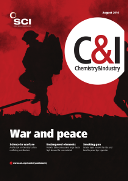A device that could charge mobile phones using just the humidity in the air could prove useful in remote areas. When water droplets spontaneously jump away from superhydrophobic – extremely difficult to wet – surfaces during condensation, they can generate small amounts of electricity, Massachusetts Institute of Technology, US, researchers have shown.
In 2013, Nenad Miljkovic and Evelyn Wang showed that droplets on a superhydrophobic surface convert surface energy to kinetic energy as they merge to form larger droplets. This sometimes causes the droplets to spontaneously jump away, enhancing heat transfer by 30% relative to other techniques. They later found that the jumping droplets gain a small electric charge. This means that the jumping, and the accompanying heat transfer, could be enhanced by a nearby metal plate whose opposite charge is attractive to the droplets.
Now the researchers have shown that the same process can be used to generate power, simply by giving the second plate a hydrophilic surface (http://dspace.mit.edu/handle/1721.1/88037). As the droplets jump, they carry charge from one plate to the other; if the two plates are connected through an external circuit, that charge difference can be harnessed to provide power.
The initial tests involved copper plates, although Miljkovic says any conductive metal would do, including cheaper aluminium. These produced very small amounts of power, just 15 picowatts (trillionths of a watt)/cm2 of metal plate. But Miljkovic says the process could easily be tuned to achieve at least 1 microwatt/cm2 – enough to fully charge a mobile phone in about 12 hours.
Any location where dew forms would be capable of producing power for a few hours in the morning, Miljkovic says. ‘The atmosphere is a huge source of power, and all you need is a temperature difference between the air and the device.’ The device would produce condensation, just as water condenses from warm, humid air outside a cold glass. A practical device would contain two arrays of flat metal plates, interleaved closely but not touching.
‘This work provides a new approach for energy-harvesting, which can be used to power [microelectromechanical] devices and small electronic devices,’ says Chuanhua Duan of Boston University, US. ‘Getting power from a condensation process is definitely a novel idea, as condensation is mainly used for thermal management... Recent studies of condensation on superhydrophobic surfaces [have] extended its applications in self-cleaning and anti-icing, but no one has correlated condensation with energy-harvesting before.’





